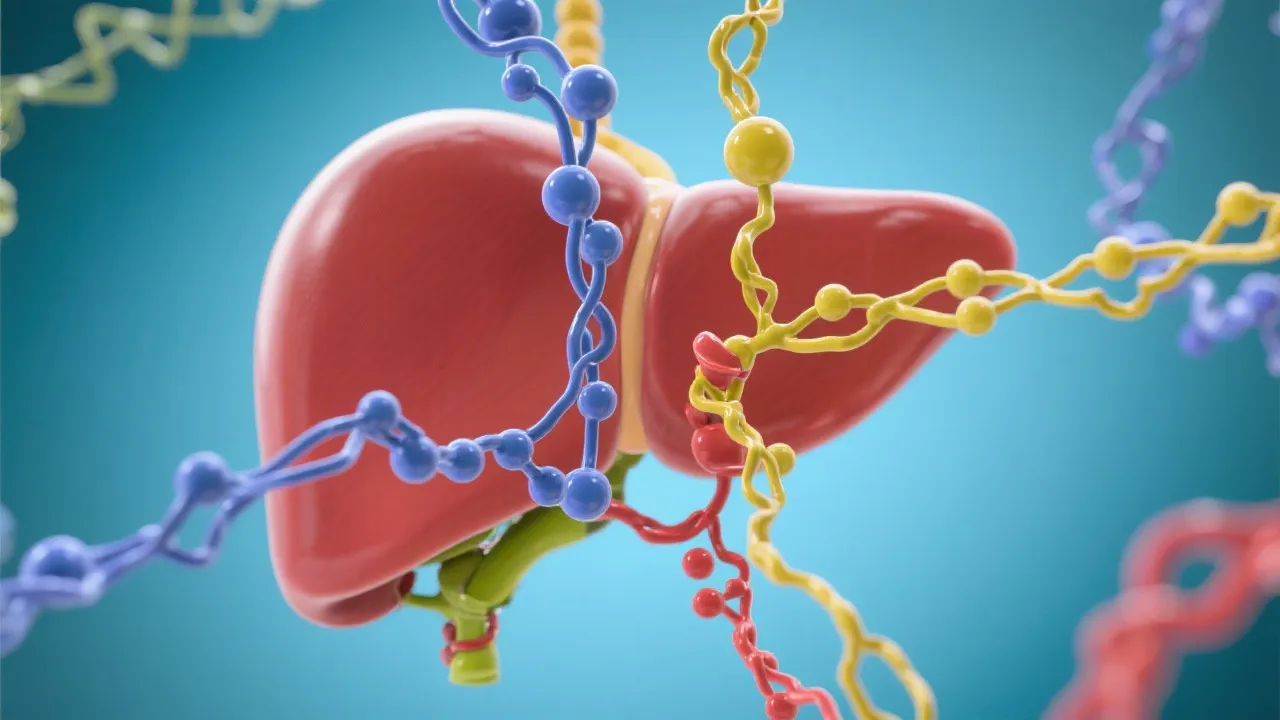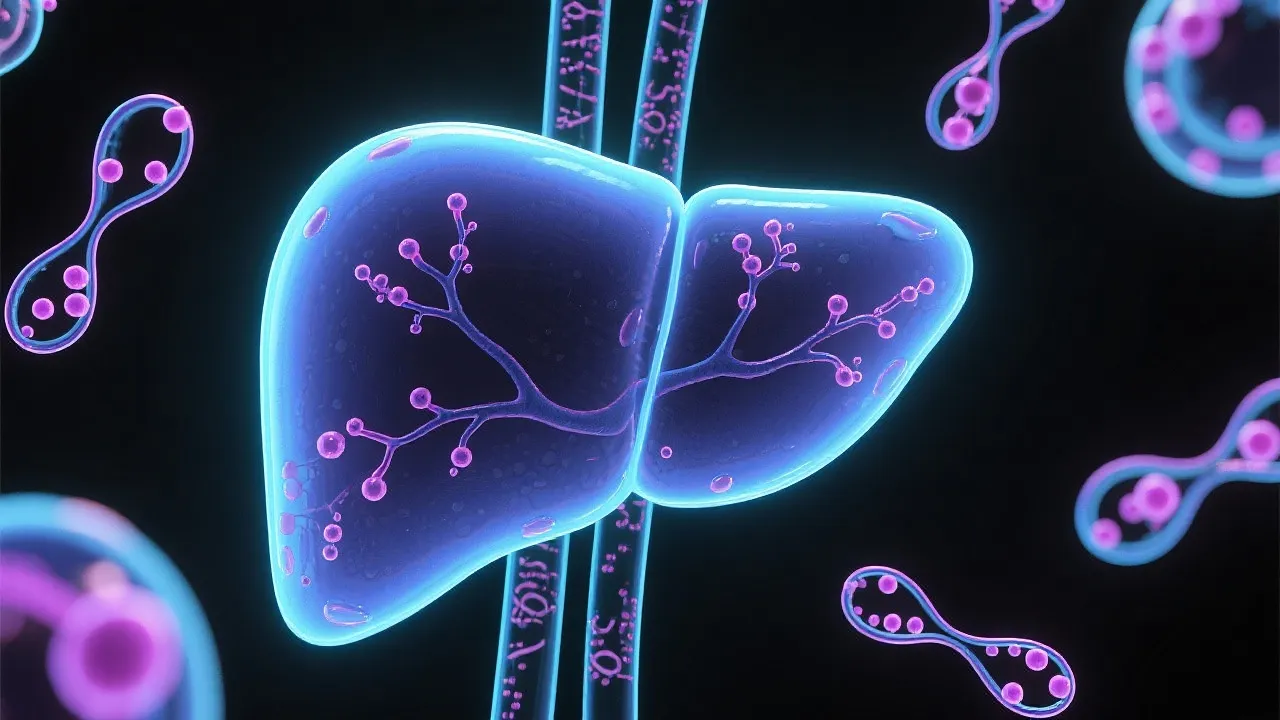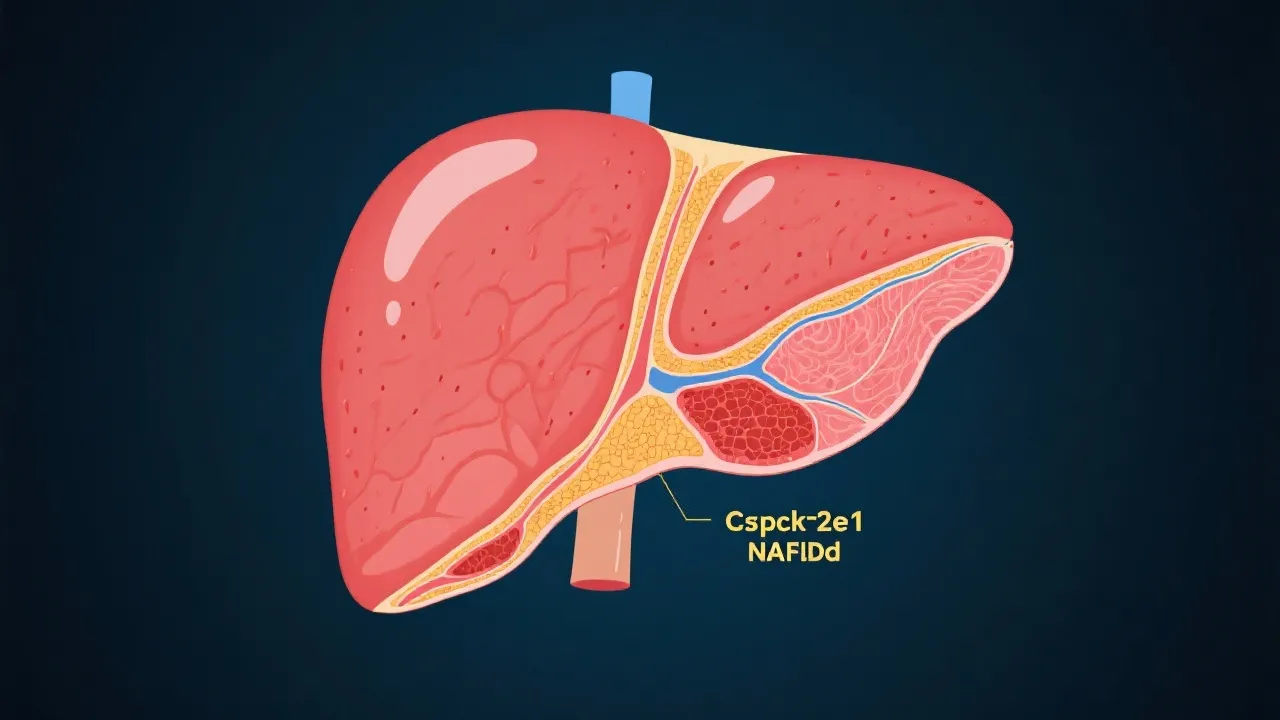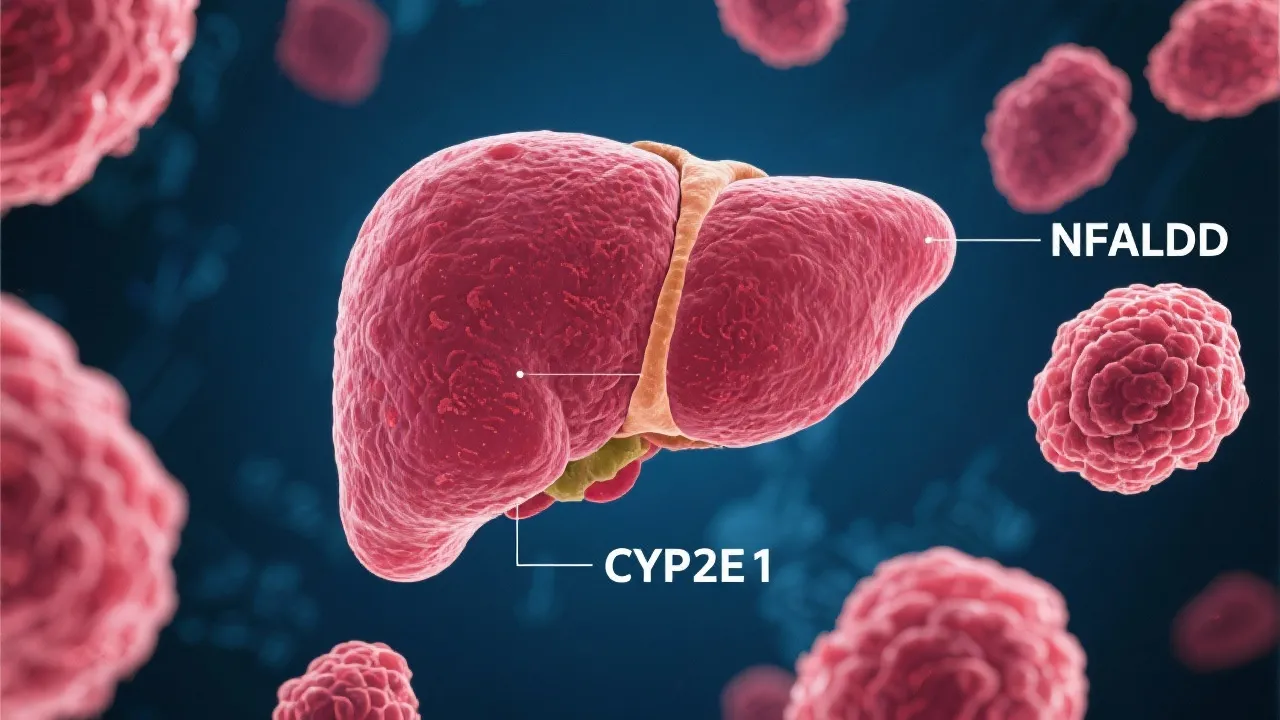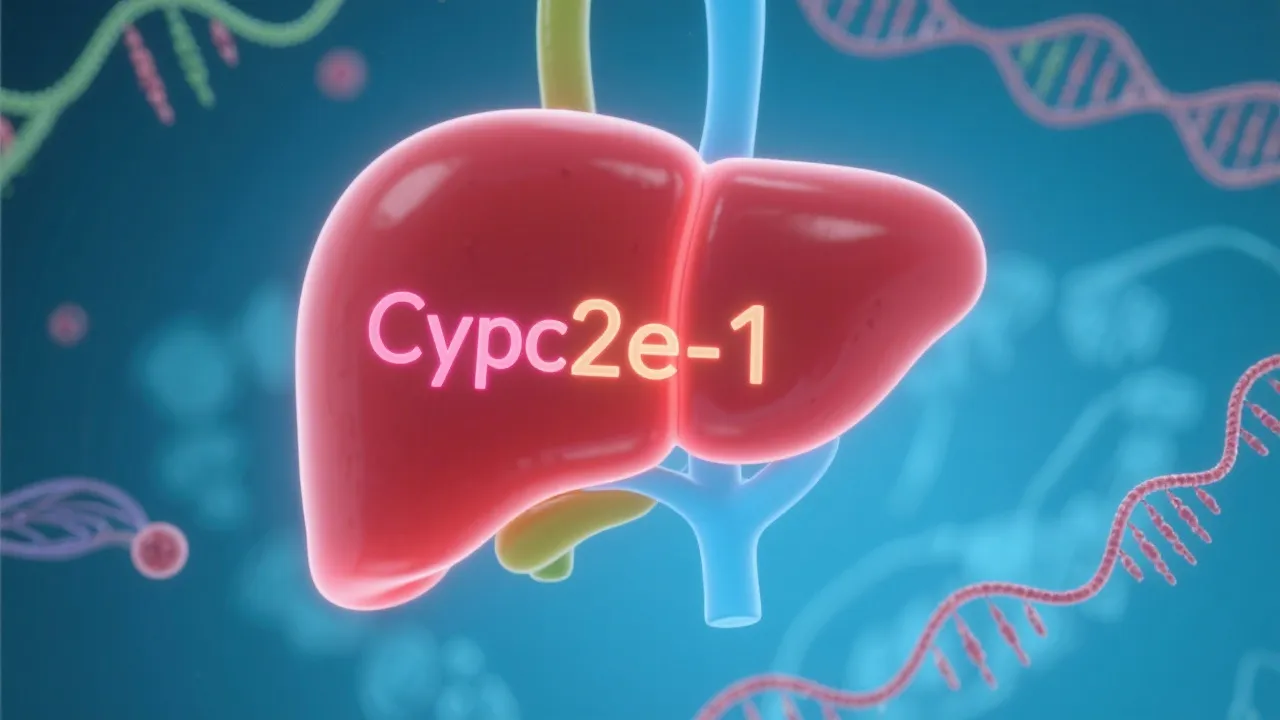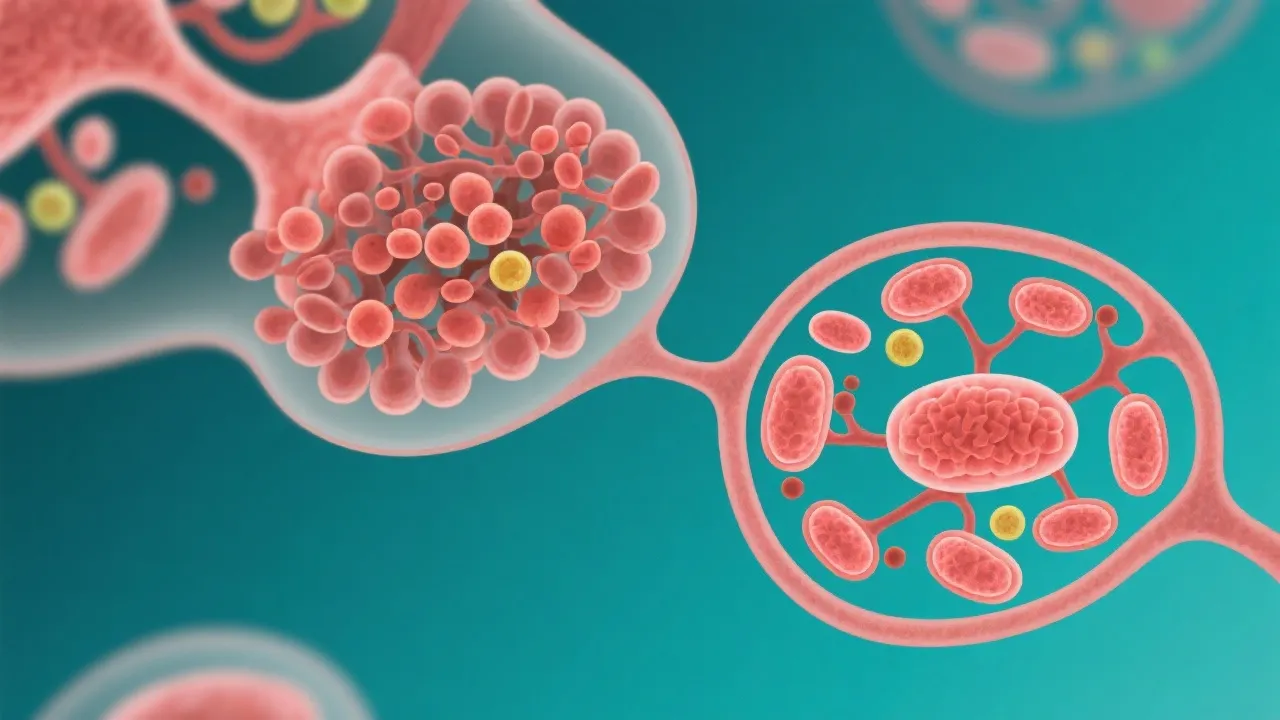Cyp2e1 and NAFLD: A Detailed Examination
The intricate relationship between the CYP2E1 enzyme and non-alcoholic fatty liver disease (NAFLD) is pivotal in advancing our understanding of liver health. CYP2E1, an enzyme in the liver, plays a crucial role in the metabolism of small organic molecules. In the context of NAFLD, exploring its mechanisms helps in identifying therapeutic targets. The study of CYP2E1 in relation to NAFLD opens new avenues for potential treatments and preventive strategies.
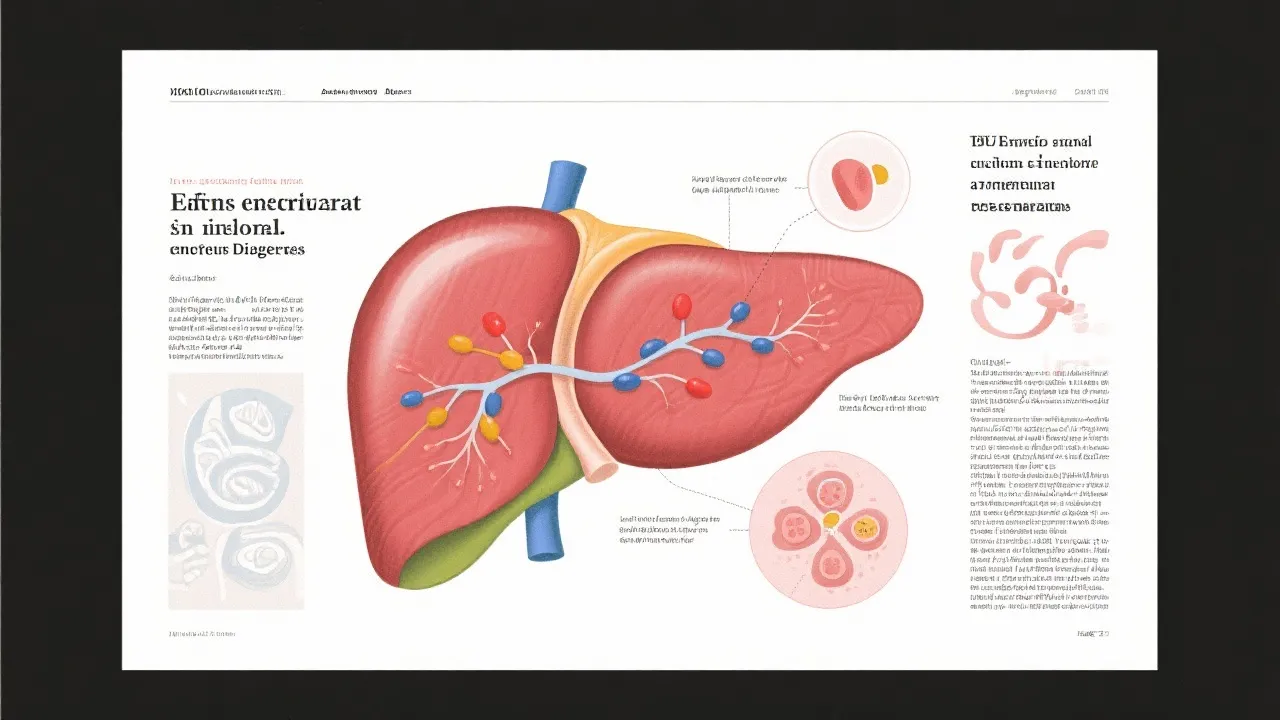
Introduction to CYP2E1 and NAFLD
CYP2E1, or cytochrome P450 2E1, is a key enzyme found predominantly in the liver. This enzyme plays an essential role in the metabolism of xenobiotics (foreign chemical substances) and endogenous fatty acids, making it a vital component of hepatic function. Specifically, CYP2E1 is involved in the oxidative metabolism of a variety of small organic molecules, which can include both drugs and environmental toxins. The liver is not only the central organ for detoxification but also plays a crucial role in fat metabolism. On the other hand, non-alcoholic fatty liver disease (NAFLD) is a condition characterized by the accumulation of fat in the liver in individuals who consume little to no alcohol. NAFLD can progress through several stages, beginning with simple steatosis and potentially advancing to non-alcoholic steatohepatitis (NASH), fibrosis, and possibly cirrhosis, which is the scarring of the liver. Understanding the role of CYP2E1 in the pathogenesis of NAFLD is crucial for developing effective therapeutic strategies aimed at preventing and treating this increasingly Common Liver Disease.
The Role of CYP2E1 in NAFLD
CYP2E1 has attracted attention in the context of NAFLD due to its ability to produce reactive oxygen species (ROS) during its enzymatic activity, contributing to oxidative stress within the liver. Oxidative stress is implicated in a myriad of liver injuries, being particularly important in the progression of NAFLD. The process begins with the accumulation of fat within hepatocytes, which can lead to an upregulation of CYP2E1 expression. As the levels of CYP2E1 increase in response to hepatic fat accumulation, this results in a corresponding rise in ROS levels. The excessive ROS can cause further liver damage and inflammation, thereby worsening the condition. This relationship underscores the importance of CYP2E1 as a therapeutic target for NAFLD management.
Furthermore, studies have shown that elevated CYP2E1 levels correlate with increased lipid peroxidation and the severity of liver disease in patients with NAFLD. The term "lipid peroxidation" refers to the oxidative degradation of lipids, leading to cell membrane damage and the generation of further potentially toxic by-products. As oxidative stress continues to worsen, the cycle of liver injury and inflammation perpetuates a downward spiral, emphasizing why therapeutic strategies aimed at reducing CYP2E1 activity may have significant clinical benefits.
Mechanisms of Action
The mechanism by which CYP2E1 influences NAFLD involves several interconnected pathways, presenting a multifaceted approach to understanding how this enzyme contributes to liver pathology. Firstly, one of the primary roles of CYP2E1 is the generation of reactive oxygen species (ROS). This process leads to lipid peroxidation, which is a chain reaction that damages cell membranes and augments hepatocyte (liver cell) injury. When hepatocytes are damaged, they can release danger-associated molecular patterns (DAMPs) that activate immune responses, leading to localized inflammation and further deterioration of liver tissue.
Secondly, CYP2E1 facilitates the activation of pro-inflammatory cytokines, such as TNF-alpha, IL-6, and IL-1β. These cytokines play a significant role in promoting a pro-inflammatory environment in the liver, exacerbating existing liver conditions and promoting a cycle of inflammation and damage. The activation of these pathways not only worsens oxidative stress but also disrupts normal hepatic function, leading to metabolic dysregulation.
Additionally, CYP2E1 is involved in the metabolism of various substrates that may further sensitize the liver to damage. This includes not just endogenous substrates such as fatty acids but also exogenous substances, including alcohol and certain medications. Understanding these intricate mechanisms provides crucial insights into the pathophysiology of NAFLD, revealing potential avenues for therapeutic intervention that could address the root causes rather than simply the symptoms of the disease.
Therapeutic Implications
Targeting CYP2E1 for therapeutic intervention in NAFLD holds considerable promise in clinical settings. Current research is dedicated to identifying inhibitors of CYP2E1 that could potentially reduce ROS production, thereby decreasing oxidative stress and halting disease progression. For instance, studies have proposed using compounds such as aspirin and atorvastatin as potential CYP2E1 inhibitors. These compounds specifically target pathways known to be involved in oxidative stress and inflammation, potentially offering dual-pronged therapeutic effects.
In addition to pharmacological approaches, lifestyle modifications such as dietary changes and physical activity can also play a critical role in managing NAFLD. Reducing hepatic fat accumulation through weight loss, increased exercise, and a balanced diet may attenuate CYP2E1 expression and its deleterious effects. Research has shown that lifestyle interventions can markedly improve liver histology and reduce biomarkers of liver damage in individuals with NAFLD.
As research progresses, the development of novel drugs specifically targeting CYP2E1 may become a cornerstone in the management of NAFLD. These potential therapeutic strategies could not only offer new avenues for treatment but also improve overall liver health and prevent the complications associated with advanced liver disease.
Comparative Insights: The Functionality of CYP2E1 Across Different Conditions
| Factor | CYP2E1 Impact | NAFLD Progression |
|---|---|---|
| Oxidative Stress | Increases ROS, leading to significant liver cell damage. | Promotes liver injury and facilitates NASH development. |
| Inflammation | Activates various pro-inflammatory pathways. | Facilitates progression to fibrosis and cirrhosis. |
| Lipid Peroxidation | Damages cellular components, including membranes and proteins. | Exacerbates liver injury and inflammation. |
| Fibrosis Formation | Induces the activation of hepatic stellate cells. | Leads to scarring and loss of liver function. |
| Drug Interactions | Modulates the metabolism of certain medications. | Affects treatment strategies and efficacy. |
Current Research Directions
The landscape of research surrounding CYP2E1 and NAFLD continues to evolve, presenting both challenges and opportunities. Recent studies have focused on elucidating the intricate mechanisms through which CYP2E1 contributes to liver damage, particularly in the context of metabolic syndrome, diabetes, and obesity, which are frequently associated with NAFLD. Research is also increasingly examining the epigenetic factors that may influence CYP2E1 expression and function, as well as how dietary components can modulate this enzyme's activity.
Furthermore, there is growing interest in biomarker development for early diagnosis and prognosis in NAFLD. Identifying specific biomarkers associated with CYP2E1 activity or oxidative stress could aid in the assessment of disease severity and the efficacy of therapeutic interventions. For instance, markers such as malondialdehyde (MDA) and 8-hydroxydeoxyguanosine (8-OHdG) are being investigated for their correlation with CYP2E1-mediated damage and overall liver health.
Clinical trials are also underway to explore the use of CYP2E1 inhibitors as adjunct therapies to current NAFLD management strategies. These trials aim not only to evaluate the effectiveness of such inhibitors in reducing hepatic fat and improving liver function but also their safety and tolerability in diverse patient populations.
Risk Factors and Implications for CYP2E1 Activity
Several risk factors may influence the activity of CYP2E1 and its role in NAFLD. These include genetic predispositions, lifestyle factors, and environmental exposures. Genetic polymorphisms in the CYP2E1 gene can lead to variations in enzyme activity among individuals. For example, certain polymorphisms can result in increased expression or activity of CYP2E1, heightening the risk of developing liver damage in susceptible individuals.
Moreover, lifestyle factors such as excessive alcohol consumption, high-fat diets, and sedentary behavior can exacerbate CYP2E1 activity and enhance the oxidative stress response in the liver. These lifestyle choices not only contribute to the pathogenesis of NAFLD but also complicate its management. Understanding how these factors interact with CYP2E1 can guide targeted interventions aimed at reducing risk and improving outcomes for patients with or at risk for NAFLD.
Conclusion
In conclusion, the investigation of CYP2E1's role in NAFLD not only offers significant insights into liver disease mechanisms but also emphasizes the potential for innovative therapeutic strategies. The enzyme's impact on oxidative stress, inflammation, and lipid metabolism is critical in understanding the progression of NAFLD from simple steatosis to more severe liver conditions. By elucidating these complex interactions and identifying targeted interventions, researchers and clinicians can work together to develop effective strategies for preventing and treating non-alcoholic fatty liver disease. As scientific studies continue to unravel these interactions, the greater understanding of CYP2E1’s function may lead to a transformative impact on liver health management, improving outcomes for millions of individuals affected by this prevalent condition.
